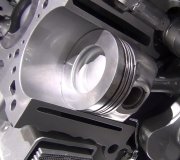CAUTION : Be sure to apply parking brake and block wheels before performing idle check or adjustment, or any engine running test.
Ignition Timing Adjustment
Adjustment conditions:
* Engine coolant temperature: 85 - 95°C (185 - 205°F)
* Lights and all accessories: Off
* Transmission: Neutral (N or P for vehicles with an automatic transmission)
1. Insert a paper clip at the wire side of the connector. Do not disconnect the connector.
2. Connect the tachometer to paper clip.
NOTE: Do not use scan tool. When the scan tool is connected to the data link connector, ignition timing will be normal ignition timing and will not be basic ignition timing.
3. Set the liming light.
4. Connect a lead wire with alligator clips to the terminal for ignition-timing adjustment (located in the engine compartment), and ground it.
5. Start engine and run at curb idle speed.
6. Aim timing light at crankshaft pulley. If flash occurs when timing mark is before specified degree mark, timing is advanced. To adjust, turn distributor housing in direction of rotor rotation. If flash occurs when timing mark is after specified degree make, timing is retarded. To adjust, turn distributor housing against direction of rotor rotation.
If timing within specified value, proceed to step (8). If outside specified value, proceed to next step.
Basic ignition timing: 5°BTDC ±2° at curb idle speed.
7. Loosen distributor mounting nut just enough so the distributor housing can be rotated in its mounting. Turn distributor housing until specified value is obtained.
8. Tighten the mounting nut and recheck timing
9. Disconnect the lead wire connected at step (4).
10. Check to be sure that the idling ignition timing is advanced to the actual ignition timing. Actual ignition timing: 8°BTDC at curb idle speed
NOTE :
1. Ignition timing is variable within about ±7°, even under normal operating.
2. And it is automatically further advanced by about 5 from the standard value at higher altitudes.
Friday, March 25th, 2011 AT 6:41 PM


